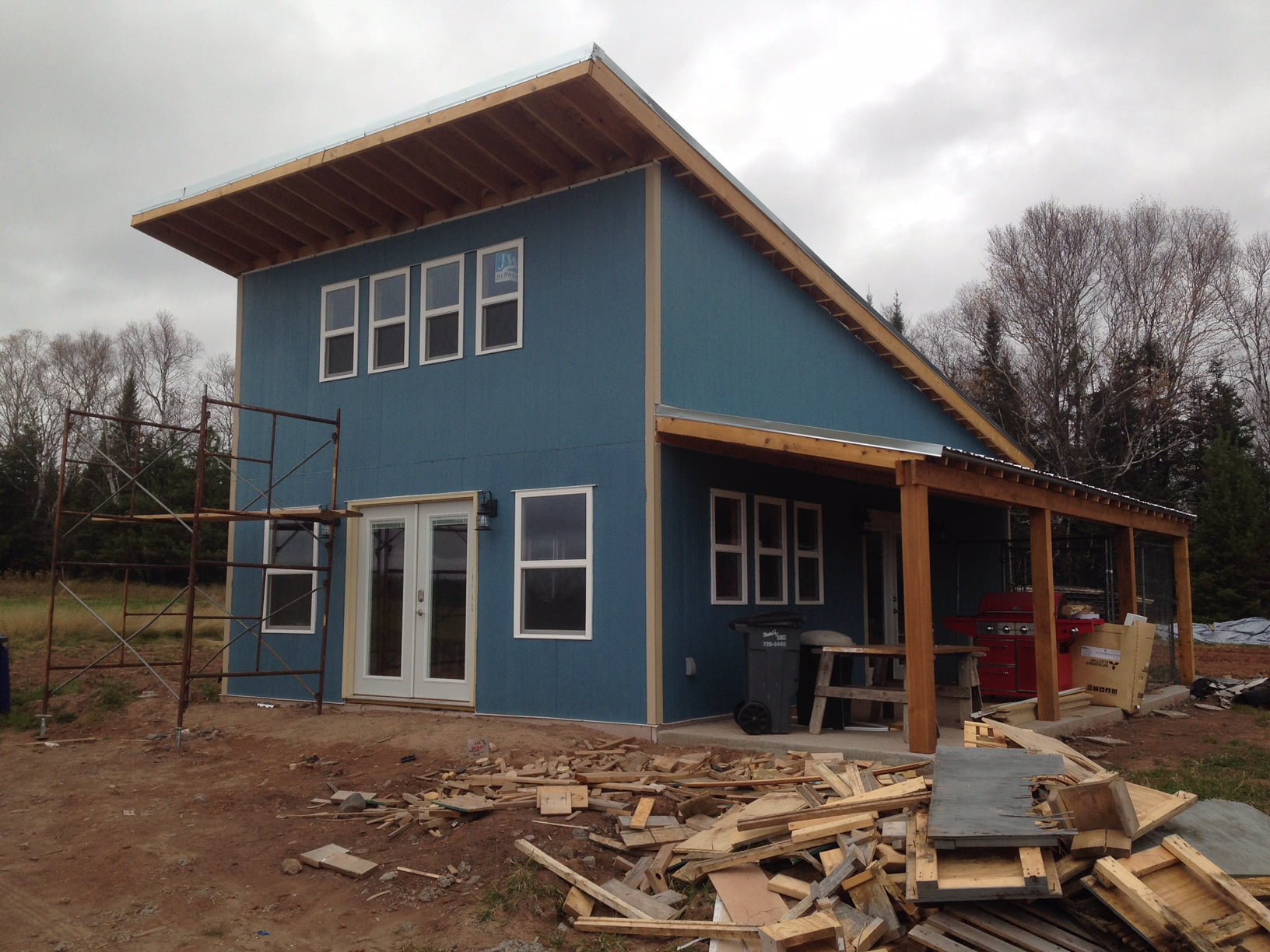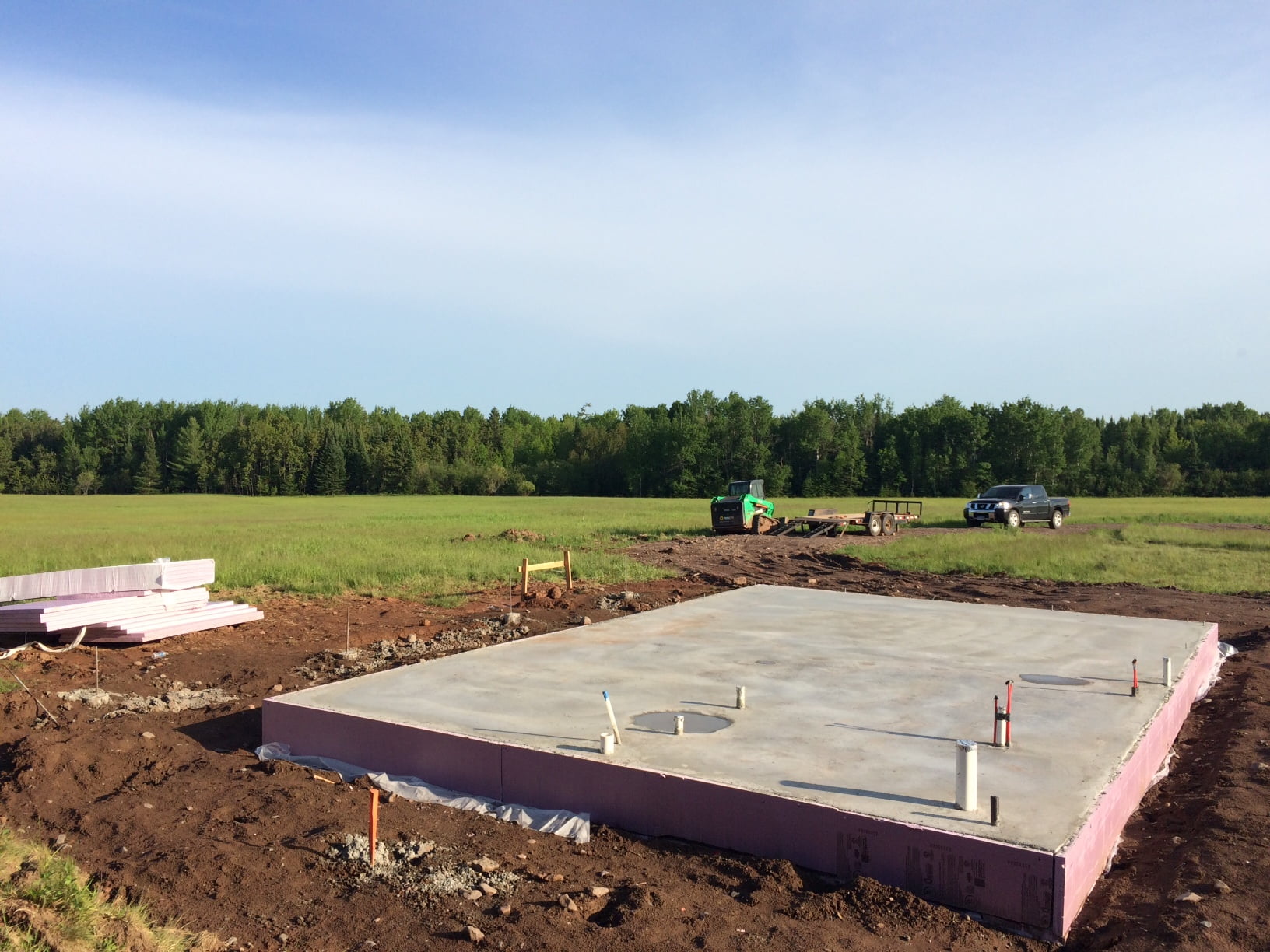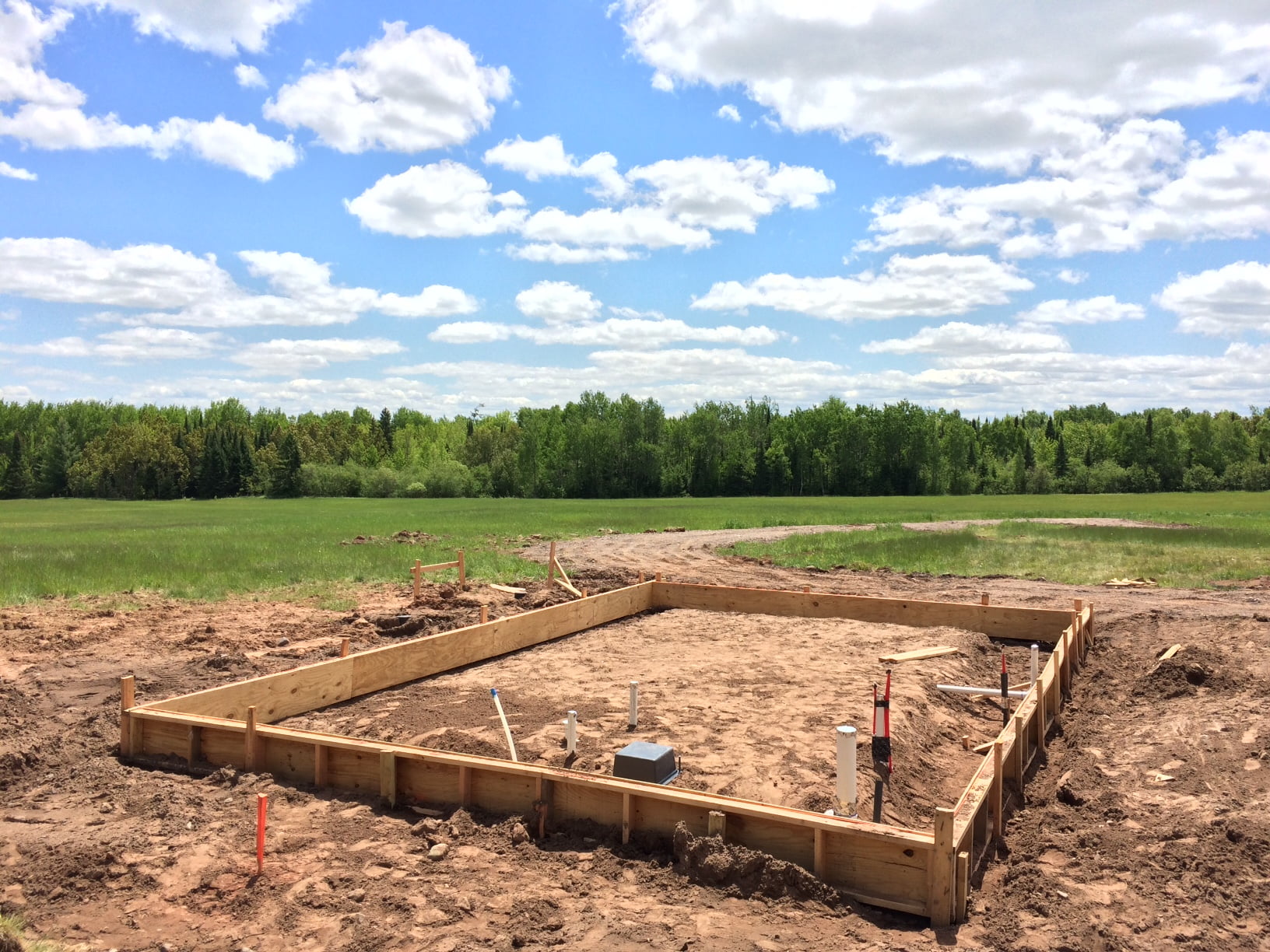Finally, after years of research, planning, saving, and more planning, we were ready to begin construction. The slab had been poured, the plans that we had designed were printed, all of our materials had been delivered, the sun was shining and I was ready to embark on our greatest adventure to date – building our own home.
We designed the house for ease of construction since we would be building it ourselves. We also kept the design minimal for aesthetics and for financial reasons. Lastly, we kept it small to force us outdoors and to save from unnecessary costs. Now, all we had to do was build it. (more…)



 It’s late so this will be a brief post, but I wanted to update everyone on the progress that we’ve made in the last few days. Mainly, the slab has been poured. Or, at least the slab for the interior has been poured along with the sonotubes that support the porch posts. The exterior slab should get poured on Monday, and then we’ll be totally done with the concrete contractor.
It’s late so this will be a brief post, but I wanted to update everyone on the progress that we’ve made in the last few days. Mainly, the slab has been poured. Or, at least the slab for the interior has been poured along with the sonotubes that support the porch posts. The exterior slab should get poured on Monday, and then we’ll be totally done with the concrete contractor. 
